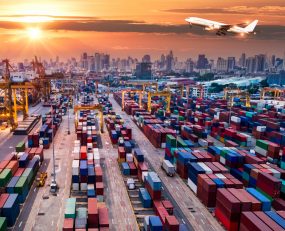
The formal start of the Comprehensive and Progressive Agreement for Trans-Pacific Partnership or (CPTPP) often called the TPP or TPP-11 for short, commenced in a low-key manner over the New Year. The hyperbole was dampened by Donald Trump having withdrawn the US from the agreement on his first day in office last year.
This should not disguise its importance for dynamics of supply chains and wider global trade.
The agreement brings together a string of economies in Eastern Asia and the Pacific rim; Australia, New Zealand, Canada, Japan, Malaysia, Chile, Peru, Mexico, Brunei, Singapore and Vietnam. Originally, the agreement that included the US would have covered around 40% of World Trade. As it is, it is still important not just for the size of the economies it covers but for the effect it is likely to have on others.
Those economies of South East Asia that are not in the CPTPP are drawn by the prospect of closer trade relations. Thailand, Cambodia and to a lesser extent, Indonesia, are all struggling with the problem of opening-up their economies to greater external investment whilst managing their volatile political situations. South Korea is hovering at the edges and may join at some stage.
Yet perhaps the most interesting role has been that of Japan. Formerly both dependent on, yet fearful of free trade, it has performed a summersault to become an evangelist of open markets. It is not an exaggeration to say that Japan led the negotiations after the US departed. This reflects a fundamental re-orientation of the Japanese economy reflected in a new approach to supply chain management by many Japanese companies and illustrated by their expansion into South East Asia over the past decade.
Although Donald Trump is explicitly hostile to the TPP, the example of NAFTA and the USMCA agreement that superseded it illustrates that even he does not preclude big free trade deals. Other nations have indicated interest, notably the UK. If such economies were drawn into the agreement it would dominate the world’s trade regulatory structure. It would also be a regulatory structure that implicitly excluded China.
The agreement sweeps away tariffs on whole categories of goods including almost all, but not all agricultural products. It also introduces a new arbitration mechanism for trade disputes, rules on labour regulations and new customs processes. The effects on logistics markets within and between the economies involved are likely to be dramatic. Not only are agricultural trade routes between Australasia or South America and North and South Asia likely to grow rapidly but investment in assembly operations in an economy such as Vietnam are likely to benefit from easier movements not just between it and Japan but also between Australia and Canada.
Such a development is a strong indication that the predictions of an end to globalisation are premature. Although the US may not yet be in this agreement, the prospect is one of TPP laying the foundations of a huge free trade structure including much of the developed world but pivoting around Asia. One of the salient facts is that this structure would shove both China and the EU to the edge of trade regulation.
Source: Transport Intelligence, January 3, 2019
Author: Thomas Cullen